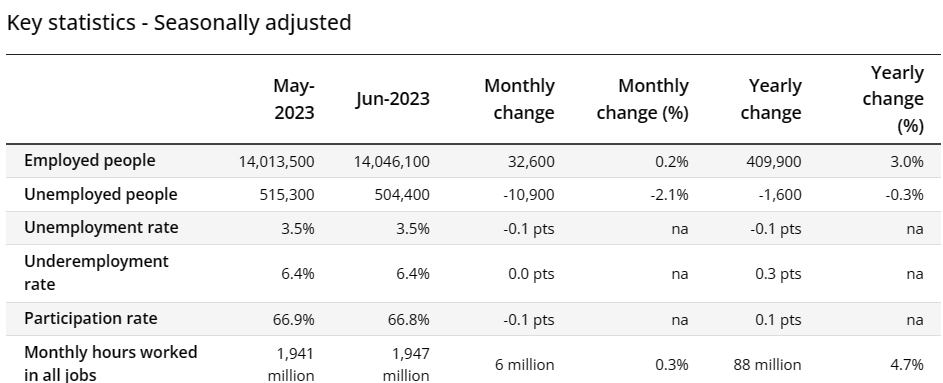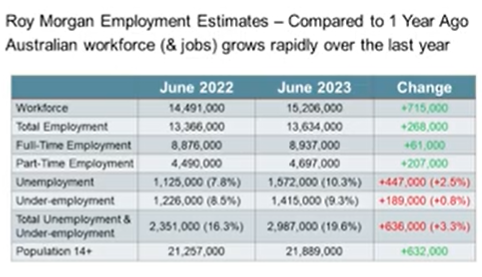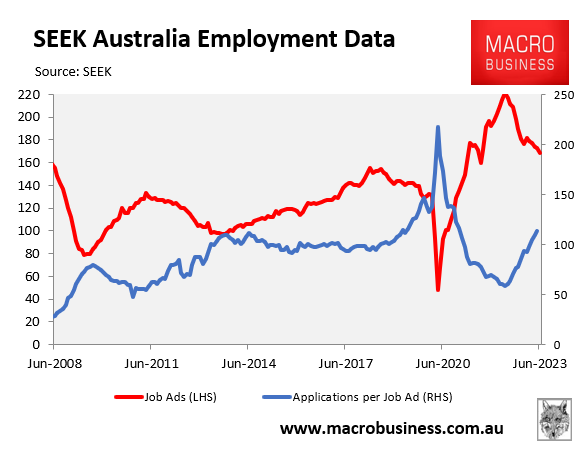The Australian Bureau of Statistics (ABS) has released its labour force survey for June, which reported a 0.1% decline in the unemployment rate to 3.5% and a 36,200 increase in jobs.
The labour force participation rate also fell by 0.1%, underemployment was steady, and the total number of hours worked rose by 0.3%:

The result beat analysts expectations of a 15,000 increase in jobs and an unemployment rate of 3.6%.
Bjorn Jarvis, ABS head of labour statistics, said “the rise in employment in June saw the employment-to-population ratio remain at a record high 64.5 per cent, reflecting a tight labour market in which employment has recently increased in line with population growth”.
“In addition to there being over a million more employed people than before the pandemic, a much higher share of the population is employed. In June 2023, 64.5 per cent of people 15 years or older were employed, an increase of 2.1 percentage points since March 2020”.
It is an odd result given it contradicts other indicators showing the labour market failing to keep pace with surging population growth (immigration).
This includes Roy Morgan’s unofficial labour market survey:

As well as SEEK’s employment data, which has historically correlated strongly with the ABS unemployment series:

The result obviously heightens chances that the RBA will lift rates again at its August meeting, as predicted by most bank economists.

